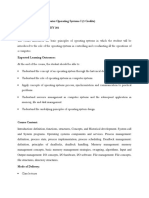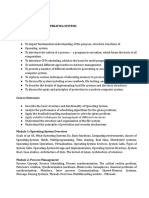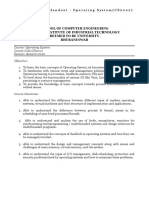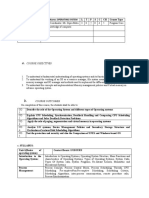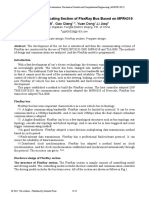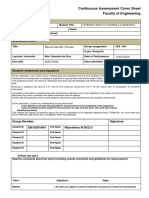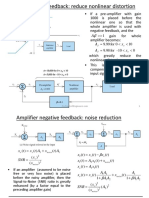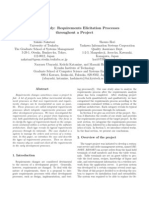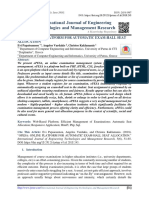B.
SYLLABUS
PREREQUISIT
COURSE NO TITLE OF THE COURSE COURSE STRUCTURE E
COCSC301/ Operating Systems 3L - 0T - 2P None
CACSC301/
CDCSC301
COURSE OUTCOMES (COs)
After completion of this course, the students are expected to be able to demonstrate the following knowledge,
skills, and attitudes:
1. To understand the function, structure, history of an operating system and the design issues associated
with an operating system.
2. To learn the concept of multithreading, process management concepts including scheduling,
synchronization and deadlocks.
3. To understand the memory management concepts including the concept of paging and virtual
memory.
4. To understand file system interface, organization of files and implementation and disk management.
5. To understand and implement the protection and security mechanisms in the operating system.
COURSE CONTENTS
Unit I
Overview of Operating systems – structure, operations, components, types, services, user interfaces. System
calls, system programs, system boot.
Process management: Processes – concept, process scheduling, operations on processes, interprocess
communications. Threads – single and multi-threaded processes.
Unit II
CPU scheduling – criteria, types of algorithms, multiple-processor scheduling.
Process synchronization – critical-section problem (CSP), conditions of CSP, semaphores, classic
synchronization problems, monitors.
Unit III
Deadlocks – characterization, deadlock prevention, deadlock avoidance, deadlock detection, prevention,
avoidance, recovery from deadlock.
Memory management – Objective and functions, Simple monitor resident program, overlays- swapping,
Main memory – memory allocation schemes, paging, segmentation. Virtual memory concept– demand
paging, page interrupt fault, page replacement algorithms, segmentation – simple, multilevel, segmentation
with paging, frame allocation, thrashing.
Unit IV
Storage management – File system, files and directories, structure and implementation of file systems,
mounting and unmounting, storage allocation methods, free-space management. Disk – structure, scheduling,
management.
Unit V
I/O management – I/O hardware, I/O interface, kernel I/O subsystem.
Protection and security – Access matrix, security threats.
Case studies of latest operating systems.
SUGGESTED READINGS
1. Silberschatz, A., Galvin, P. B., and Gagne, G. 2009. “Operating System” Principles (8th ed.)”,
Wiley.
2. Stallings, W. 2014. “Operating Systems: Internals and Design Principles” (8th ed.)”, Pearson.
3. Tanenbaum, A. S. 2007. “Modern Operating Systems” (3rd ed.)”, Pearson.



















































